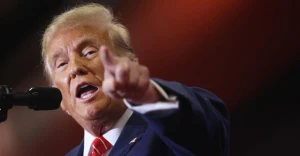
IAEA Director Grossi visits Ukraine and meets with Zelenskyy
On Tuesday, June 13, the Director General of the International Atomic Energy Agency, Rafael Grossi, arrived in Ukraine to personally assess the situation at the Russian-occupied Zaporizhzhia nuclear power plant
This is reported by the President’s Office.
During his visit to Ukraine, Grossi met with President Volodymyr Zelenskyy. Zelenskyy thanked the head of the IAEA for their quick response to Russia's detonating the Kakhovka HPP. Zelenskyy highlighted that the destruction of the Kakhovka HPP has significantly increased the risks to the safety of the Zaporizhzhia nuclear power plant. He also expressed appreciation for the presence of agency inspectors at the ZNPP and Grossi's plan to personally visit the plant.
The president supported Grossi's suggestion to send a group of IAEA experts to Ukraine. Their task would be to assess the aftermath of the Kakhovka HPP explosion and develop proposals to address the situation. Zelenskyy assured that Ukrainian institutions would fully cooperate with this mission.
He emphasized that the only way to prevent a nuclear incident at the ZNPP is to completely demilitarize it and restore Ukraine's control over the plant, ending its occupation.
Grossi shared his proposals for assisting Ukraine.
"Timely conversation with Ukraine’s President Volodymyr Zelenskyy on the eve of my visit to Zaporizhzhia nuclear power plant where I will assess the situation after the catastrophic Nova Kakhovka dam flooding. I presented to President Zelenskyy a programme of assistance to Ukraine based on nuclear techniques in the areas of human health, food and potable water safety, animal health, soil and water management, and in assessing the health of critical infrastructures after the flooding," Grossi wrote on Twitter.
IAEA's response to the Kakhovka HPP dam explosion
On June 6, Volodymyr Zelenskyy discussed the consequences of the Kakhovka HPP explosion and the risks for the ZNPP with the head of the IAEA and invited him to Ukraine. In response, Grossi stated that he would lead the organization's next mission to the ZNPP after the hydroelectric power plant was blown up by Russia.
Raffael Grossi later expressed concern that in two days, the ZNPP would no longer be able to receive water for cooling from the Kakhovka HPP reservoir. On June 8, the water level in the Kakhovka Reservoir dropped by 2.8 meters to 14.03 meters, and the rate of loss slowed down to 5-7 cm/h. Grossi added that if the water level falls below 12.7 meters, the Zaporizhzhia Nuclear Power Plant will no longer be able to extract water from the reservoir for the site.
On June 9, it was noted that based on preliminary conclusions from IAEA experts, the Zaporizhzhia NPP should be able to pump water from the reservoir to cool the reactors even after the level drops below the critical 12.7 meters. At the same time, Director General Grossi announced an aid program for Ukraine in response to the flooding of the dam in Nova Kakhovka.
On June 12, Grossi expressed concern about the rapid decrease in water levels at Zaporizhzhia TPP following the destruction of the Kakhovka HPP. The IAEA is requesting access to the Zaporizhzhia nuclear power plant to clarify the discrepancy in data regarding the water level at the blown-up Kakhovka dam, used for cooling the ZNPP reactors.
On June 12, IAEA Director General Rafael Grossi was on his way to Ukraine to assess the situation at the temporarily occupied Zaporizhzhia NPP and present an assistance program after the Kakhovka disaster.
- News












































